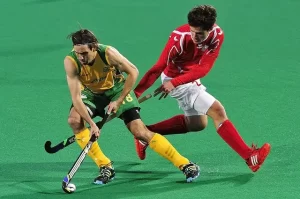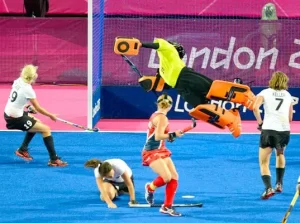Where Was Field Hockey Invented?
Where Was Field Hockey Invented?
Field hockey, with its fast-paced action and strategic maneuvers, is a sport enjoyed worldwide. But where did this exciting game originate? Buckle up for a historical journey as we explore the origins of field hockey!
This post will take us back in time, examining evidence of early forms of field hockey in ancient civilizations like Egypt and Greece. We’ll then shift gears and delve into the development of the modern game in 19th-century England. So, grab your stick and get ready to learn about the fascinating evolution of field hockey from its ancient roots to the international phenomenon it is today! In this comprehensive exploration, we delve into the origins of field hockey, tracing its roots through history and examining the claims of various countries vying for the title of its birthplace.
Field hockey, often referred to simply as “hockey” in many parts of the world, is a team sport played on grass or artificial turf. Players use curved sticks to hit a small, hard ball into the opposing team’s goal. It is a fast-paced and physically demanding game that requires skill, strategy, and teamwork.
Also, read about How many periods in hockey
Historical Background
Origins of Field Hockey
The exact origins of field hockey are shrouded in the mists of time, with evidence suggesting that versions of the game have been played for thousands of years. Ancient civilizations such as the Egyptians, Greeks, and Romans had sports involving sticks and balls that bear resemblance to modern-day hockey.
Evolution of Field Hockey Equipment
Over time, the equipment used in field hockey has undergone significant evolution. From rudimentary wooden sticks to the lightweight, durable composite materials used today, innovations in equipment have enhanced the speed and skill of the game.
The Birthplace of Field Hockey
Claims of Origin
Numerous countries lay claim to being the birthplace of field hockey, each citing historical evidence and cultural significance to support their case. Among the leading contenders are India and England, both of which played pivotal roles in the development and popularization of the sport.
The Debate Surrounding Its Invention
The question of where field hockey was invented is not easily settled, as historical records are often incomplete or contradictory. Scholars and enthusiasts continue to debate the matter, with new evidence occasionally emerging to challenge prevailing theories.
Discover more about How long is a hockey game
India: A Contender for the Birthplace
Early Records of Field Hockey in India
India has a strong case for being the birthplace of field hockey, with historical records indicating that a game resembling modern hockey was played in the country as far back as the Mughal era. These early versions of the game were known by various names, including “khido khundi” and “dandu.”
Influence of British Colonialism
The spread of field hockey beyond India’s borders can be attributed in large part to British colonialism. British soldiers stationed in India during the 19th century adopted the game and introduced it to their homeland, where it gained popularity among the aristocracy and eventually became an organized sport.

England: Another Potential Birthplace
Emergence of Modern Rules and Regulations
While field hockey may have originated in ancient civilizations, it was in England that the modern version of the game began to take shape. In the late 19th and early 20th centuries, British sports clubs codified the rules and regulations of field hockey, laying the foundation for its global expansion.
Early Organized Matches
England can also lay claim to hosting some of the earliest organized field hockey matches, with clubs and schools competing against one another in friendly and competitive fixtures. These matches helped popularize the sport and establish it as a staple of British athletic culture.
Other Countries’ Contributions
Scotland, Ireland, and Other European Nations
While India and England are often cited as the primary contenders for the birthplace of field hockey, other European countries also played significant roles in its development. Scotland and Ireland, in particular, have long-standing traditions of field hockey and have produced many talented players and teams.

Field Hockey in North America
Field hockey found its way to North America through European immigrants and travelers, with clubs and leagues springing up in the United States and Canada in the late 19th and early 20th centuries. Today, field hockey enjoys a growing following in North America, with collegiate and international competitions attracting widespread attention.
Conclusion
The question of where field hockey was invented may never be definitively answered, but its origins are undoubtedly rooted in the rich tapestry of human history. From ancient civilizations to modern-day competitions, field hockey has captured the imaginations of players and fans around the world, transcending borders and cultures.
FAQs
Is field hockey the same as ice hockey?
No, field hockey is played on grass or artificial turf with curved sticks and a small, hard ball, whereas ice hockey is played on ice with skates and a puck.
What are the basic rules of field hockey?
The basic rules of field hockey involve using the stick to pass, dribble, and shoot the ball, to score goals by hitting the ball into the opposing team’s net.
How many players are on a field hockey team?
A standard field hockey team consists of 11 players, including a goalkeeper.
What are penalty corners in field hockey?
Penalty corners are awarded to the attacking team when a defensive foul occurs within the shooting circle. During a penalty corner, the attacking team has a chance to score directly from a set-piece play.
Is field hockey an Olympic sport?
Yes, field hockey has been an Olympic sport since 1908 for men and since 1980 for women, with both indoor and outdoor variants.
